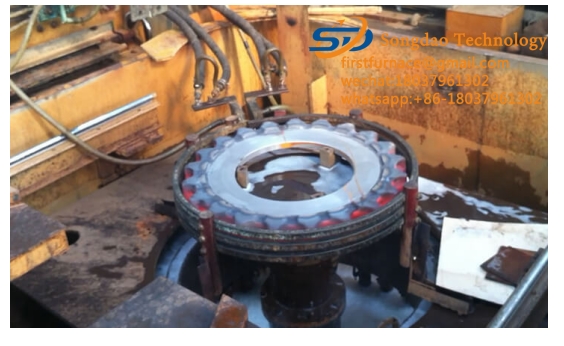- 12
- Dec
Almindelige defekter og modforanstaltninger ved induktionshærdning på overfladen af induktionsvarmeudstyr
Almindelige defekter og modforanstaltninger ved induktionshærdning på overfladen af induktionsvarmeudstyr
1. Material factors
The identification method we often use is the spark identification method. This is the simplest method. Check the sparks of the workpiece on the grinding wheel. You can roughly know whether the carbon content of the workpiece has changed. The higher the carbon content, the more sparks.
2. The quenching heating temperature is not enough or the pre-cooling time is long
Quenching heating temperature is not enough or pre-cooling time is too long, resulting in too low temperature during quenching. Take medium carbon steel as an example. The quenched structure of the former contains a large amount of undissolved ferrite, and the structure of the latter is troostite or sorbite.
3. Utilstrækkelig køling
① Especially during scanning quenching, because the spray area is too short, after the workpiece is quenched, after passing through the spray area, the heat of the core makes the surface self-tempering (the large step of the stepped shaft is most likely to be generated when the upper position is), and the surface is self-tempered. The tempering temperature is too high, which can often be sensed from the surface color and temperature.
②I engangsopvarmningsmetoden er afkølingstiden for kort, selvhærdningstemperaturen er for høj, eller sprøjtehullets tværsnitsareal er reduceret af sprøjtehullets skala, hvilket forårsager selvet. – tempereringstemperaturen skal være for høj (gearslukningssensor med sprøjtehul, den mest tilbøjelige til sekundære sygdomme).
③Temperaturen på bratkølevæsken er for høj, flowhastigheden reduceres, koncentrationen ændres, og bratkølingsvæsken blandes med oliepletter.
④Sprayhullet er delvist blokeret, hvilket er karakteriseret ved utilstrækkelig lokal hårdhed, og det bløde blokområde svarer ofte til placeringen af sprayhullet blokeret.

